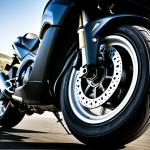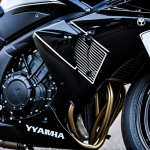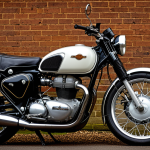Core Principles of Suspension Setup for Track Use
Understanding Kawasaki Z900 suspension setup is crucial for maximizing track performance. Suspension fundamentally impacts how the bike handles, offering stability, traction, and rider confidence during aggressive cornering and braking. The primary components influencing suspension behavior are the springs, dampers, and adjustment settings—preload, compression, and rebound. Each affects how the motorcycle responds to track demands.
The Z900’s stock suspension setup, while balanced for street riding, often falls short on the track. It tends to be too soft, which can lead to excessive dive under braking and less precise cornering feel. This limits the motorcycle’s potential to maintain consistent lap times. For track use, the suspension must be tuned stiffer and more responsive to handle the increased lateral and longitudinal forces experienced during high-speed turns and braking zones.
Have you seen this : Mastering Quickshifter Installation on Your Yamaha R3: Achieve Lightning-Fast Gear Shifts!
A proper suspension setup improves grip, reduces rider fatigue, and enhances overall confidence. This requires knowing the suspension fundamentals but also applying tailored adjustments based on the Z900’s characteristics. Skilled riders perceive that a well-tuned setup transforms the bike’s behavior, making it a crucial factor for competitive track performance.
Essential Suspension Upgrades for Kawasaki Z900
Upgrading the Kawasaki Z900 suspension setup is vital to unlock its full potential on the track. The stock components often limit performance, so selecting the right track suspension components is the first step toward better handling and feedback.
Also to discover : Achieving Optimal Tire Air Pressure for Superior Stability in Your Piaggio MP3: The Definitive Handbook
A common upgrade begins with performance shocks and springs. Stiffer springs matched to rider weight reduce unwanted dive and maintain chassis balance during hard braking and cornering. High-quality shocks offer adjustable compression and rebound, allowing fine-tuning to track conditions. For example, aftermarket rear shocks like those from Öhlins or Showa are preferred for their precise damping control.
Fork internals kits are another essential upgrade. These kits replace stock components with enhanced springs, dampers, and valving tailored for track demands. They improve front-end feel and stability during aggressive riding, preventing the common “mushy” sensation in stock forks.
When choosing Z900 suspension upgrades, consider rider weight and riding style. Heavier riders or aggressive cornerers need firmer springs and stronger damping for optimal feedback, while lighter riders may prefer medium settings to maintain plushness. This customization ensures the bike responds sharply yet remains manageable during extended track sessions.
Core Principles of Suspension Setup for Track Use
Fine-tuning the Kawasaki Z900 suspension setup hinges on mastering key suspension fundamentals. Essential components include the springs, dampers, and critical adjustment settings: preload, compression, and rebound. Each of these influences the bike’s behavior under the high stresses of track riding.
The stock Z900 suspension is generally too soft for track demands. This softness results in excessive front-end dive during braking and vague feedback when cornering aggressively. Consequently, the chassis feels less stable, undermining rider confidence and lap times.
Understanding how these components interact is vital for an effective motorcycle track setup. Preload primarily adjusts ride height and initial spring tension, influencing chassis balance. Compression damping controls how quickly the suspension compresses under load, critical for absorbing bumps and preventing bottoming out. Rebound damping determines how fast the suspension returns to its neutral position, affecting tire contact and stability.
For track use, the objective is to achieve a firmer, more responsive setup. This enhances grip through corners and maintains chassis composure under braking. Riders must carefully balance stiffness and compliance to avoid harshness that reduces feedback or comfort during fast laps, making suspension tuning a precise but rewarding challenge.
Core Principles of Suspension Setup for Track Use
Mastering suspension fundamentals is essential for optimizing the Kawasaki Z900 suspension setup on the track. The suspension’s role is to maintain tire contact, absorb bumps, and ensure stability during aggressive riding. The main components impacting this are springs, dampers, and adjustment settings: preload, compression, and rebound.
On the Z900, stock suspension is typically too soft for track performance, causing excessive dive during braking and sluggish feedback in corners. This softness compromises chassis stability and rider confidence—a critical issue for consistent lap times.
Understanding how preload affects ride height and balance helps set the initial chassis posture. Compression damping controls how quickly the suspension compresses under loads like braking or bumps, while rebound damping manages how the suspension returns after compression, influencing grip and stability.
Effective motorcycle track setup involves a fine balance: enough stiffness to resist excessive dive and maintain chassis control, yet enough compliance to absorb track irregularities. Precision in these settings is the foundation for increased grip, confidence, and ultimately, better lap times on the Kawasaki Z900.
Core Principles of Suspension Setup for Track Use
Achieving an effective Kawasaki Z900 suspension setup for track use hinges on understanding key suspension fundamentals. The suspension ensures consistent tire contact, chassis stability, and rider control under demanding conditions. Three main components influence handling: springs, dampers, and adjustment settings—preload, compression, and rebound.
On the track, the Z900’s stock suspension typically proves too soft, causing excessive dive during braking and imprecise cornering feedback. This softness reduces stability, compromising rider confidence and lap times. Preload adjustment sets the initial spring tension and ride height, impacting chassis balance and weight distribution.
Compression damping controls how quickly the suspension compresses under force, critical for managing bumps and braking weight transfer. Rebound damping regulates how fast the suspension returns to its original position, affecting tire grip and chassis composure. Properly tuning these settings creates a firmer yet compliant setup, enhancing grip through corners and minimizing chassis movement under high loads.
Understanding these suspension fundamentals forms the cornerstone of any motorcycle track setup for the Z900. Riders who grasp this can tailor their suspension to match their riding style and track challenges, unlocking better performance and confidence lap after lap.
Core Principles of Suspension Setup for Track Use
Achieving an effective Kawasaki Z900 suspension setup for track use depends on understanding suspension fundamentals that govern handling and stability under racing conditions. Key components influencing suspension behavior include the springs, dampers, and adjustment settings: preload, compression, and rebound. These elements work together to maintain tire contact, absorb track irregularities, and control chassis movement.
The Z900’s stock suspension, designed primarily for street comfort, often proves too soft on the track. This results in excessive dive during heavy braking and vague feedback when cornering aggressively. Such softness leads to reduced chassis stability and lowered rider confidence, which can degrade lap times.
Preload adjustment sets spring tension and influences ride height and weight distribution. Compression damping controls how the suspension compresses under load, critical for resisting bottoming out and managing bumps. Rebound damping dictates how quickly the suspension returns after compression, ensuring consistent tire grip and chassis composure.
An optimized motorcycle track setup seeks a balance: firm enough to resist dive and maintain responsiveness, yet compliant enough to absorb track nuances. Mastering these fundamentals empowers riders to tailor their Kawasaki Z900 suspension setup, unlocking better grip, control, and consistent track performance.











